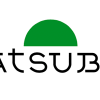This increases the number of payments users can make and so, given constant demand, can make it more affordable to send Bitcoin payments. However, if you use a different script type (P2PKH, or multisig using P2SH or P2WSH), the number of vbytes used to spend them are even larger, so the savings rate will be higher. 1. Optech believes that almost all nodes are using the default Bitcoin Core policy for transaction group limits. Transaction relay nodes such as Bitcoin Core impose limits on the transactions they relay to prevent attackers from wasting bandwidth, CPU, and other node resources. The only notable consideration is that Bitcoin Core nodes (and most other nodes) will refuse to accept or relay transactions over 100,000 vbytes, so you should not attempt to send batched payments larger than this. As of January 2021, payment batching is used by multiple popular Bitcoin services (mainly exchanges), is available as a built-in feature of many wallets (including Bitcoin Core), and should be easy to implement in custom wallets and payment-sending solutions. In that way, increased use of payment batching may lower the feerate for all Bitcoin users. The data aggregator also revealed that all of the top 30 most sought-after NFT collections on its radar have garnered the attention of 400 or more users who have added them to their watchlists.
The NFT sector, in general, witnessed a significant slump owing to the broader market downturn. This essentially indicates that 95% of NFTs hold no monetary value, marking a dramatic decline from its peak during the frenzied bull market of 2021 when the collective trading volume reached $17 billion. As of now, 2023 NFTs hold nine positions within the top 30, edging out their 2022 counterparts, which account for eight slots. NFTs created in 2021 continue to maintain their strong appeal, occupying 12 out of the top 30 spots on CoinGecko’s popularity rankings. In fact, a majority of the most popular collections are still Ethereum NFTs, comprising 24 out of the top 30 rankings. But a new report from dappGambl, titled ‘Dead NFTs: The Evolving Landscape of the NFT Market,’ stated that these tokens are largely worthless. This trend may suggest that 2022 was a challenging year for NFT collections, offering a slightly more optimistic outlook for 2023. With several months remaining in the year, it remains uncertain whether more 2023 NFT collections will rise in popularity. The NFT that boasts the highest popularity on CoinGecko is Nakamigos, having found its way onto the watchlists of 1,234 users.
A second concern with payment batching is that it can make users feel like they have less privacy. But if a single receiver of a batched payment spends their output to the point where fee bumping becomes impossible, all the other receivers of that transaction are also affected. If using your own implementation, you are probably already creating transactions with two outputs in most cases (a payment output and a change output), so it should be easy to add support for additional outputs. The fee-reduction benefits of payment batching do create tradeoffs and concerns that you will need to address when using the technique. This doesn’t prevent payment batching from being useful, although it does reduce its effectiveness. Also by delaying sending of their payment, you also delay when it’s confirmed (all other things being equal, such as feerates). For example, use the CONSERVATIVE mode of Bitcoin Core’s estimatesmartfee RPC. On the downside, use of the technique can lead to temporary unexpected behavior for the receivers of payments, a possible inability to fee bump, and may result in a reduction of privacy.
Note: the figures and plots above all assume use of P2WPKH inputs and outputs. If we assume that consolidation transactions will pay only 20% of the feerate of a normal transaction and will consolidate 100 inputs at a time, we can calculate the savings of using the two-step procedure for our one input per output scenario above (while showing, for comparison, the simple best-case scenario of already having a large input available). This means using a high-enough feerate on the initial transaction to ensure it has a high probability of confirming within your desired time window. In the first step, multiple small inputs are consolidated into a single larger input using slow (but low-feerate) transactions that spend the service’s money back to itself. Ideally, your prior consolidations should allow the transaction to contain only a single input. For example, some services may receive payments of about the same value as the payments they make, so for every output they add, they need to add one input on average. For example, create an hourly cronjob that sends all pending payments. In particular, the descendant limit can be easily reached if those receiving payments from a large batch respend their unconfirmed outputs.





